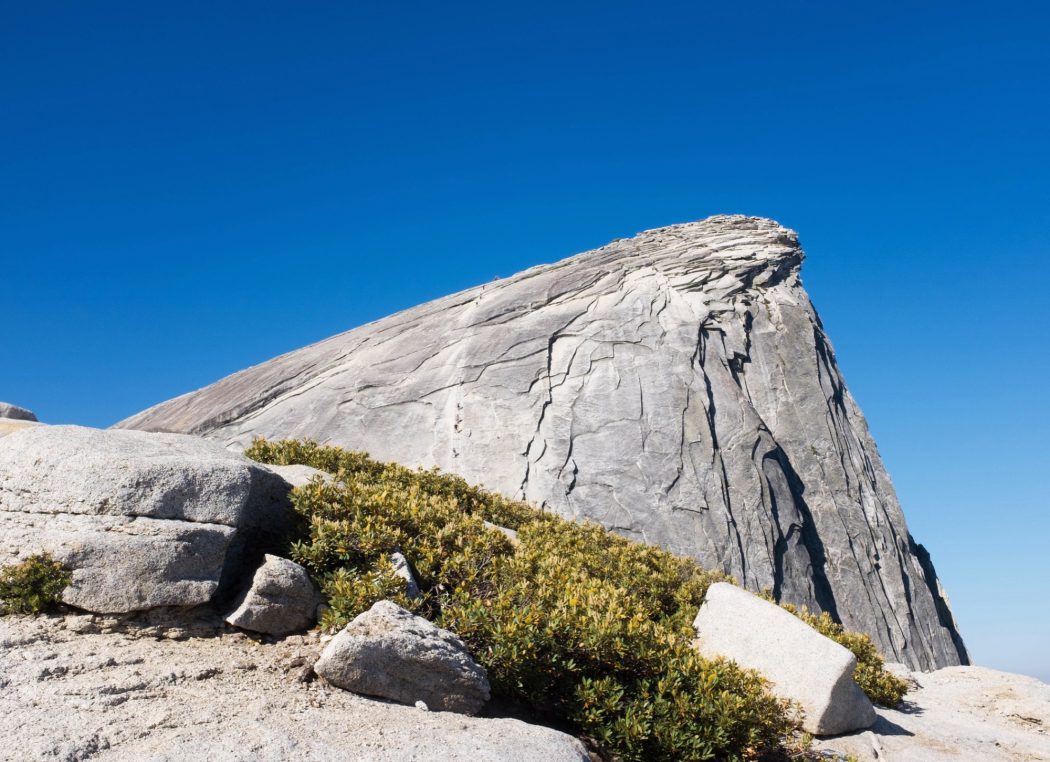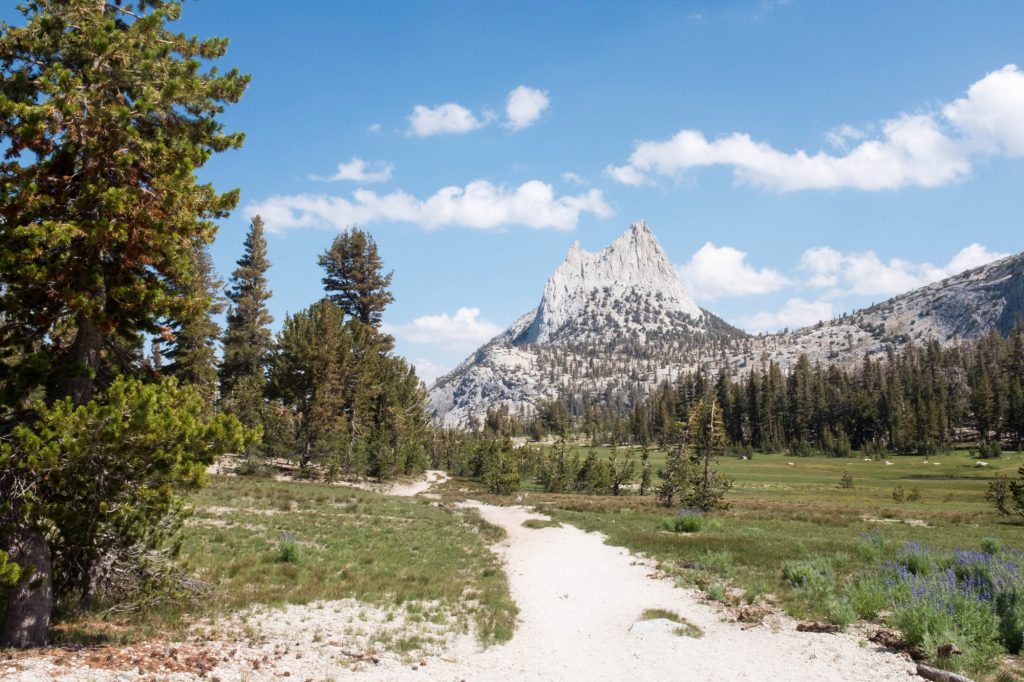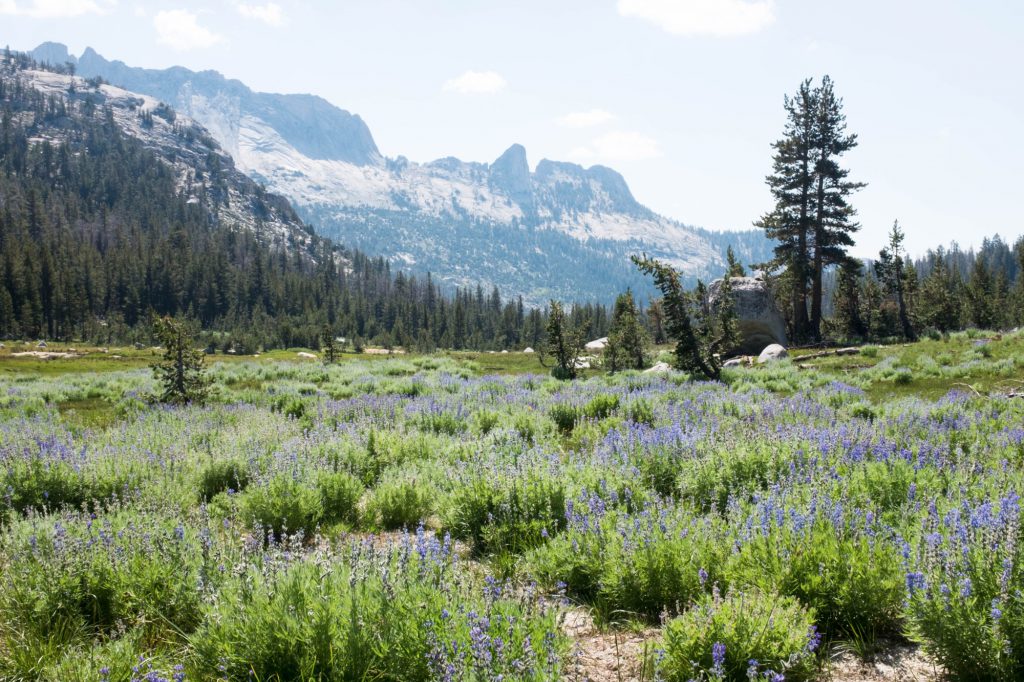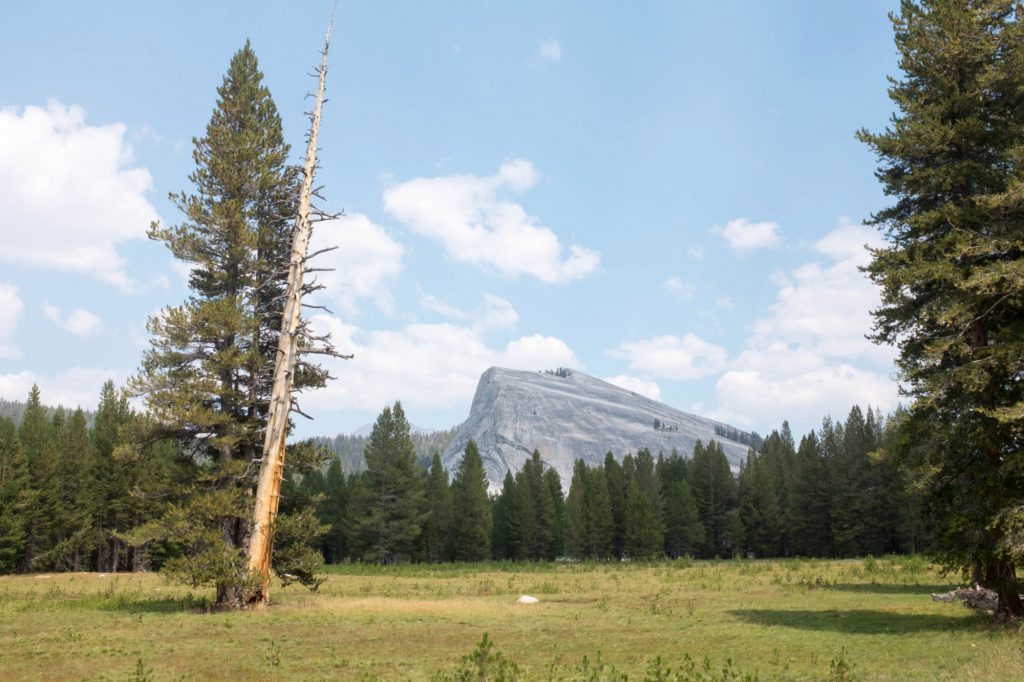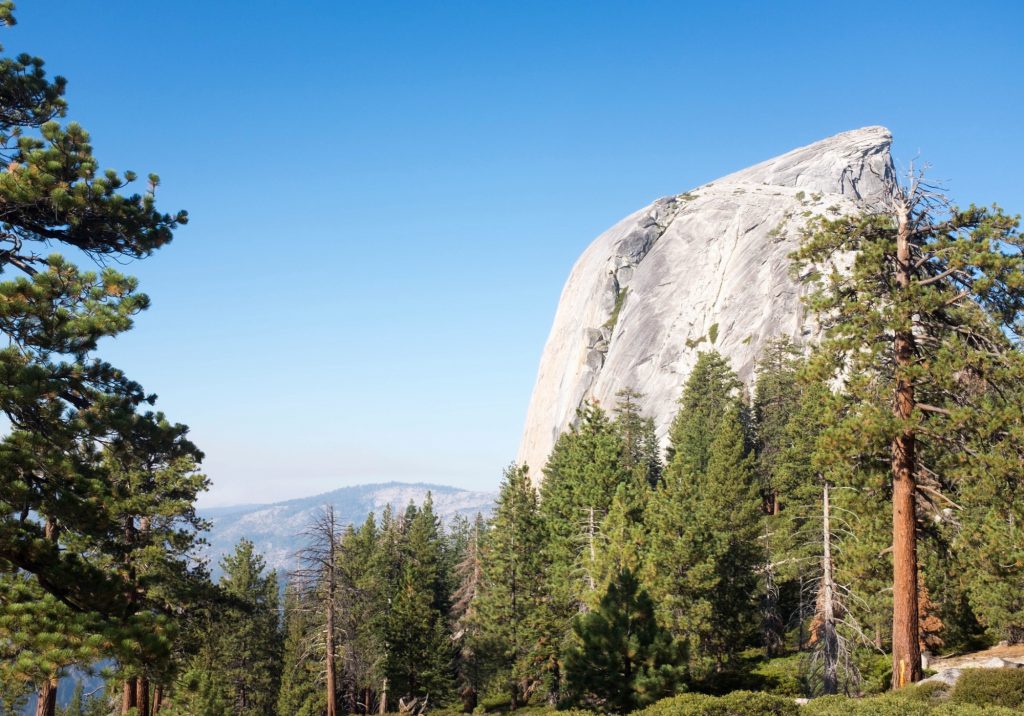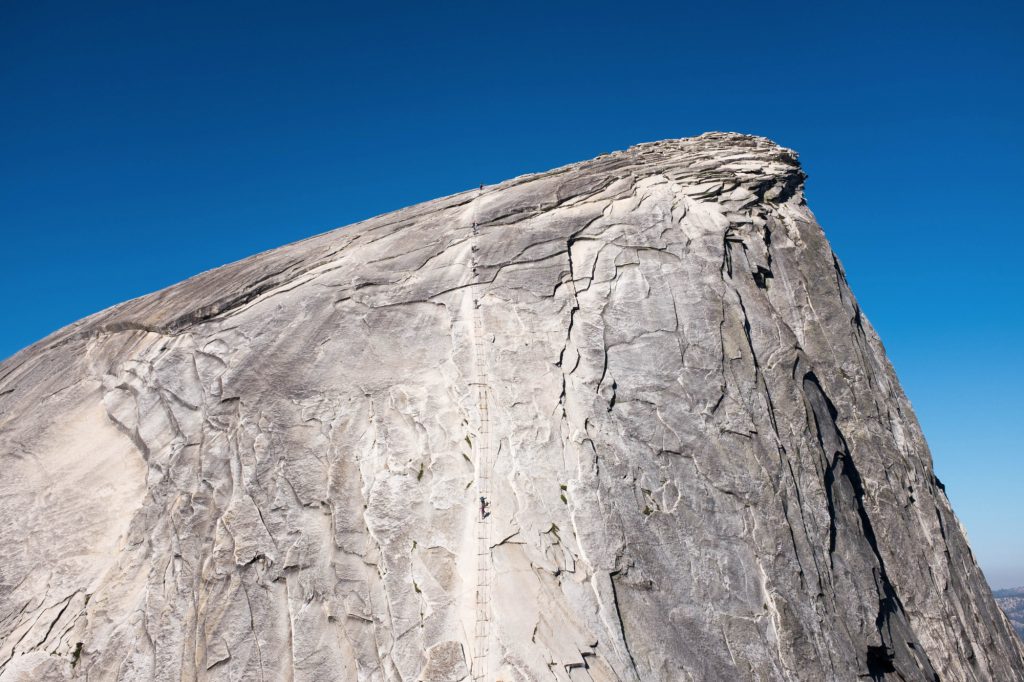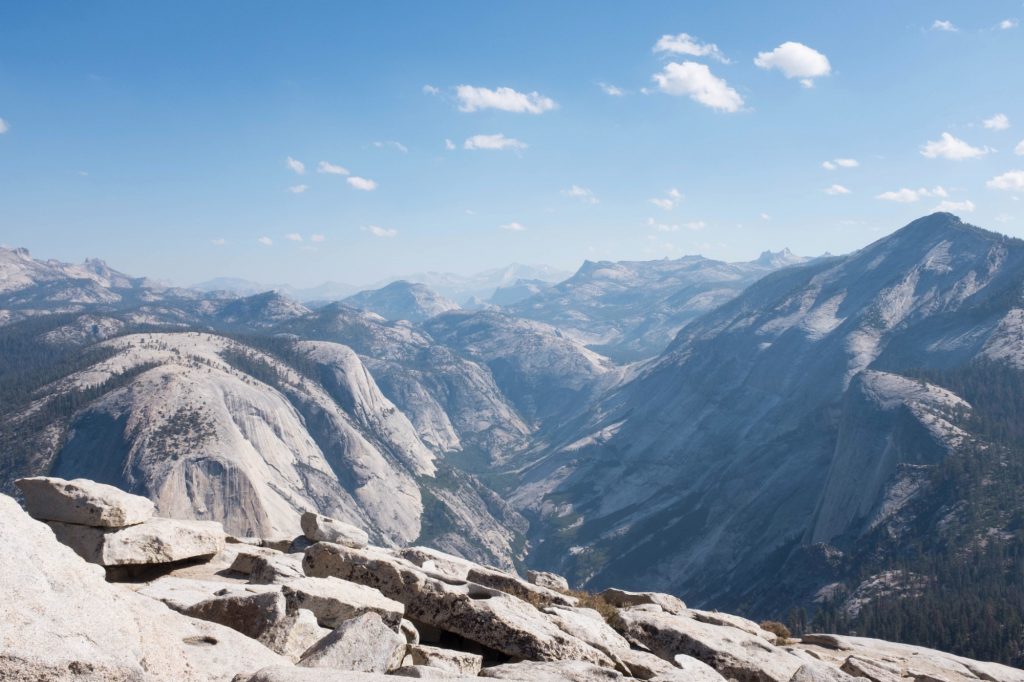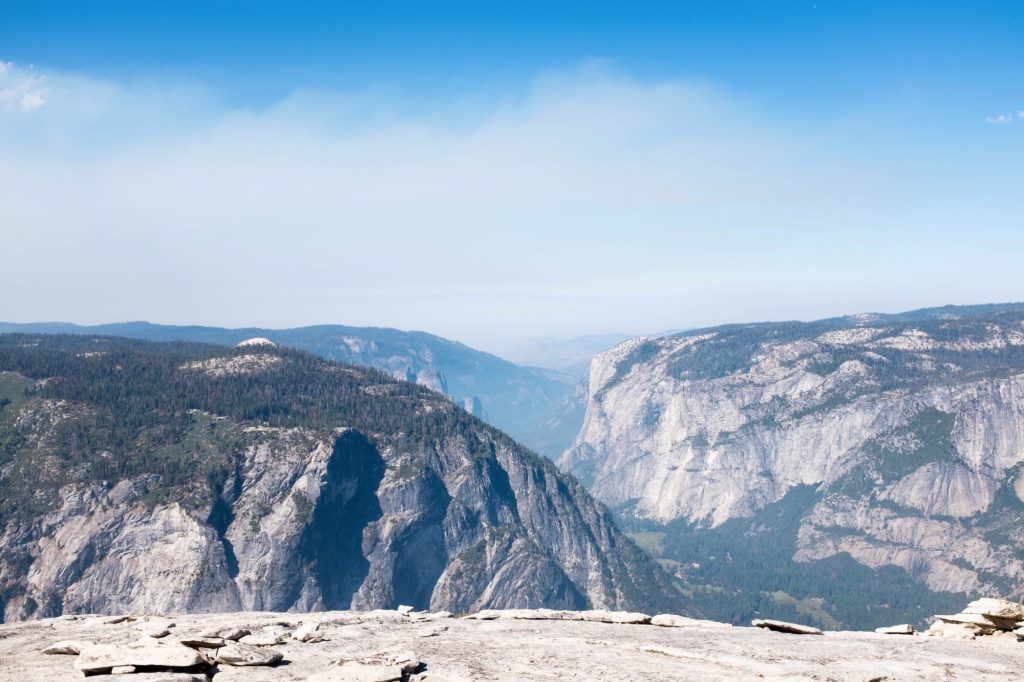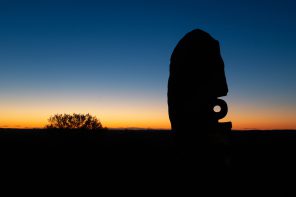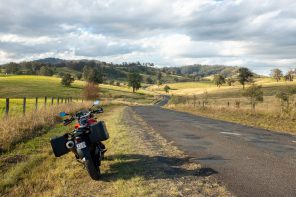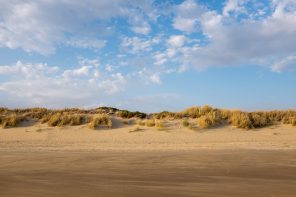The John Muir Trail is a long-distance hiking trail taking in 338.6 kilometres of California’s Sierra Nevada mountain range. On this visit, we hiked for ten days in August, completing a section of the trail from Devils Postpile to Yosemite Valley. This third post (you can see the first post here and the second post here) covers my experience on the trail between Cathedral Peak and Yosemite Valley via Half Dome.
Awaking along the shore of Cathedral Lake, the sun rises magnificently behind Cathedral Peak, casting a beautiful light over the water. The water is relatively warm and inviting leading several of the group to go for an early morning swim. Breaking camp, this day was planned to be an easy one after two punishing days. However, it was not to be. Another 20km hike took us through forest and mountain areas as we trekked towards the evening’s campsite at Sunrise Creek.
Half way along and it was steep switch backs for about two hours as we dropped steeply in elevation. This part of the trail is tough on your feet and knees, and I spent most of it in a kind of controlled fall as I threw myself down the mountain. Feet hurting, the next section took us through last years bushfire zone before reaching the Sunrise Creek campsite. Tired, we set up camp only to realise that we were not the required 100 feet from the trail. This meant relocating up the hill to a sloping site where ants crawled all over the tent and no nearby water source.
Fortunately, sleep solves many problems including irritability and soreness. We woke to a wonderful view of Half Dome shimmering in the Californian sun. Half Dome is a much more serious undertaking than I had imagined. The trek to the base is similar to much of the steep paths we found throughout the Sierras. However, as you begin the climb, you can see that it is going to be a very steep and potentially dangerous ascent.
Steps cut into the rock provide sure footing in most places, however, there are sections that require you to scramble unaided up the rock. After doing this for about fifteen minutes, you reach a plateau where you can see the final accent to the summit; a vertiginous rock face with two metal cables and wooden slats spaced about every ten feet.
We arrive relatively early which is the best way to climb Half Dome as it can be difficult to let those coming down pass on the steep face. The climb itself is tough, using predominantly arm strength, with rests required every 7-10 paces. Reaching the summit, there is a great sense of achievement for all and one that is rewarded with sweeping views in every directing taking in Yosemite Valley, El Capitan and Clouds Rest.
Returning down the ladder is no joke either as one fall would bring down all those on the ladder below. Physically it’s considerably easier coming down although allowing others to pass has its dangers. At the bottom, you can look back to see where you have been and I am still amazed at the steepness of the climb.
We walked back to camp and then further down the hill to Little Yosemite Valley; shortening our hike to Yosemite Valley the following day. Before departing, we sourced water from a different part of Sunrise Creek only to discover a waterfall and pond in which to bath. This was a very pleasant experience after the hard climb.
Arriving at Little Yosemite Valley—a proper campsite—after eight days was like re-entering civilisation. The campsite grounds were flat, there were what felt like a lot of people (probably on 60-70), and there were toilets for the first time in days. Going down the hill towards Yosemite Valley the next morning was the real re-entrance into society as there are over four million visitors to Yosemite National Park each year. You quite quickly go from being essentially on your own to being faced with a long stream of people climbing up from the valley floor.
Around five hours later, we arrive in Yosemite Valley for our last night under the stars in the special JMT access only campsite. A bacon double cheeseburger with fries, hot dog, salad, etc for dinner was well received after all that dehydrated food; it is incredible how much of this high calorie food you can eat after days on the trail.
The following morning, we washed in the creek for the last time before boarding a bus for the six hour ride to San Francisco. Reflecting on the trek, it was a great adventure testing me physically, and at times mentally. Our bodies are capable of so much more than sitting at a computer all day and visiting the gym at night to compensate. This is a trail I would recommend to anyone for its fresh air, good trail markers and outstanding natural beauty.
